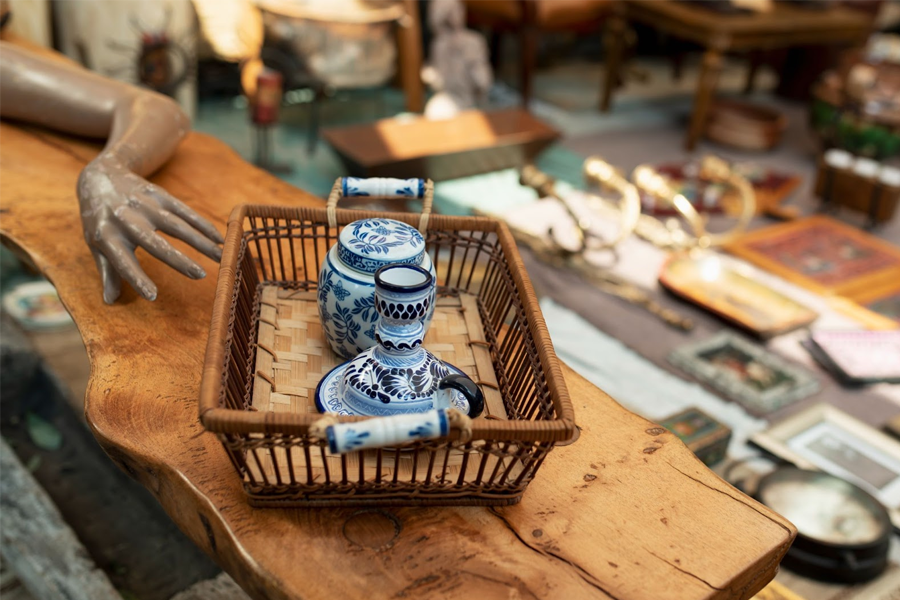
Exploring the world of online selling and online platforms where you can sell your products is a great opportunity to grow your business and earn money.
If you are a vintage product seller, an artisan or a handcraft maker, you should know that Etsy is the platform you have been looking for.
In this article, we will explore how to sell on Etsy Singapore. Buckle up, Singaporeans; this could be a great way to up your game in the online business world. Let’s start now!
What Is Etsy and How Does It Work
Even though Etsy is most popularly known in Western countries like the United States, United Kingdom, Germany, and Canada, it is still a good platform to sell handicrafts in Singapore. Singaporeans can sell on Etsy and create an Etsy shop. But before we dive in on how you can sell on Etsy, let us first define it.
Etsy is an American e-commerce platform that connects sellers with buyers who are into vintage items, handmade goods, craft supplies, and other unique items. Etsy was founded in 2005 by Rob Kalin and his business partners Haim Schoppik, and Chris Maguire. It has grown into a big marketplace of different listings and categories. If you are part of the ecosystem of crafters and diverse in Singapore, you can open your Etsy shop for free.
Creating an account is free but there are also other fees. Some of the Etsy fees are listing fees, offsite ads fees, and payment processing fees. These listing fees cost 0.20 USD for every item you publish on the site. Your listings will expire after (4) four months, but you can always renew them for 0.20 USD / for each product or item.
On the other hand, you will only pay off site advertising fees, and payment processing fees when you make a sale.
Once your account and shop are created you can now start your business and start attracting customers. But, of course, you still need to consider a few details before streamlining your product to the market.
Legal Considerations: Rules and Regulations for Selling on Etsy from Singapore
Before you start selling on Etsy, you need to know and understand important regulations and legal considerations in your country, which is Singapore, and of course, Etsy itself. Since you are an international seller, you need to make sure to abide by your country’s law when registering on Etsy.
Accounting and Corporate Regulatory Agency (ACRA) is the national business registry of Singapore. This is where you can find all the registered businesses in Singapore and you can also register your business here.
Now, in terms of knowing what is the legal structure you need to decide which legal structure you should register your business.
Here are some of the legal structures you should consider:
- Sole proprietorship;
- General proprietorship;
- Corporation;
- Limited Liability Corporation (LLC).
Sole proprietorship and general proprietorship are the simplest and not the most expensive business structures you can go for. The only difference between the two is the number of owners. A sole proprietorship means there is only one owner, while a general proprietorship means there are multiple owners. Most Etsy shops are sole proprietorships.
On the other hand, the main advantages of Corporation and Limited Liability Corporations are for example if a customer got hurt by your product and decided to sue you, they cannot sue you, the owner directly. They have to sue the company or the corporation itself – this will protect you and your assets from debts and obligations. Unlike sole and general proprietors, they will be the ones to be directly sued if a problem arises.
After choosing your business legal structure, you may now register your shop name or business to ACRA.
But not all the time small businesses and other sellers on Etsy register their business. There are exemptions like if your business is under the same name as your name in your National Registration Identity Card (NRIC) then you don’t need to register your business. In other instances, if it is only a hobby or not a full-time business, then there is no need, but you will still need to ensure that you are familiar with tax obligations, especially if you are making sales.
As for Etsy’s regulations, here are some you need to follow:
- What to sell on Etsy – Handmade items, vintage items (must be 20 years older and above), and craft supplies.
- What is not to sell on Etsy – Any items that violate the intellectual property policies are not to be sold on Etsy. Reselling other products is also prohibited. The site is solely for artisans and craftsmen to showcase their talent and art.
- Manage your shop well and follow Etsy’s house rules.
You must provide great trust and customer service to your customers so you must adhere to these regulations in order to uphold your brand’s identity and business’s integrity.

Creating Your Etsy Shop: Setting Up Your Account and Profile
Selling on Etsy would be as easy after you set up your account.
Here’s how to set up your account on Etsy:
- Go to Etsy’s website.
- Click the “Open your Etsy Shop” button.
- Sign up using your business email.
- Once logged in, go to the shop manager.
- Click the pencil icon next to your shop name under “Sales channel” and start creating your profile.
- Create your shop name.
- Create your shop banner.
- Fill up the About section. It should include a description of your shop, location and address, your story, and anything authentic that will help build trust with your buyers and customers.
- Fill out shop policies. State whether you accept returns and exchanges.
- Create your FAQs.
- Fill out your shop announcement portion with anything you want to include. It is best to put links of your social media accounts here, your best-selling products, or a little welcoming message to new customers who will visit your site.
- After setting up your profile, find “Finances”.
- Go to legal and tax information. If you are a solo seller, just provide your name, Singapore home address, and two valid Singaporean IDs (ex. Passport, driving license, NRIC).
- Go to payment settings after. Set up your payment method on how you want Etsy payments or how you want to pay Etsy. You can be paid, and you can pay Etsy via Apple Pay, PayPal, Google Pay, Visa, Mastercard, etc. You can also connect your bank account and bank information for much easier transactions.
You can also set up your deposit schedule or the time or date you want to receive payments from Etsy or your profit. You should also take note that when you receive your first sale profit in your bank account, Etsy will ask you to verify if it is your account by sending you a small amount, what you will do is you will go to the shop manager and verify that it is your bank account.
Then voila, enjoy your first checkout!

Adding Your Products: Tips for Creating Effective Listings on Etsy
Once your Etsy shop is good to go, it is now time to add your products to the listing.
Here are some tips on how to create an effective listing based on your brand identity:
- Upload high-quality photos of your products. Make sure to show them from different angles so that customers will already know what your product looks like from all angles.
- Put a detailed and well-crafted description. Include the materials you used, and put descriptions for any customization options.
- Think about your pricing strategy. Research similar products on Etsy to determine your selling proposition. Competitive pricing is important, now, if your product is unique and unlike any other, you will vary from the materials and tools you used, the funds, and the time of labor it took you to finish the product. As for vintage items, it is best to consult an antique expert on how much value you should put in that item.
- Optimize your titles and descriptions for SEO (search engine optimization) to improve organic traffic and visibility in Etsy’s search results. You can use Google Analytics and other free SEO tools or you can subscribe to one.
- Offer different variations like colors, styles, etc.
Customers love browsing on Etsy, so make sure that your products stand out by putting up visuals like photos, and even videos that are up to 15 seconds to help the customer see how your product would look in in-person.
Managing Your Shop: Fulfilling Orders, Handling Customer Service, and More
One of Etsy’s house rules is to manage your shop well.
Here are how you can connect to Etsy shoppers well:
- Great customer service: Customers love quality customer service. You should provide exceptional customer service to make your small business a favorite of the Singaporean audience. Create FAQs that will answer their basic questions, or respond promptly to their inquiries, messages, and concerns. Be enthusiastic about resolving issues or concerns.
- Promotion and marketing: Utilize many marketing channels to market your product aside from Etsy. You can create social media accounts for your business. Instagram, Facebook, Twitter, Pinterest, and even YouTube can help you gain brand awareness. You can also do online advertising, email marketing, newsletters, etc.
- Shipping Considerations: Select your reliable shipping method to deliver orders to your customers locally and internationally. Research about courier companies, and local postal services in Singapore to ensure cost-effective and reliable shipping. Be clear about your shipping options, time of delivery, and tracking to your customers.
- Fulfilling orders: You should be agile in processing your customer’s orders once the order is placed to meet your customer expectations. Many customers who see that the order placed takes too long, cancel their orders. So to avoid these, pack your products promptly and securely to avoid damage, contact your courier, and ship the product to your customer. Singaporeans love sustainability, so make sure that your packaging is sustainable to win their trust and attention.
- Local trends and shop preferences: Always be informed about the latest trends, holidays, and cultural events in Singapore to tailor your page and your product listings and marketing strategies. Consider making limited-time offers, special promotions, or themed collections inspired by the said new trend or event.
- Quality assurance: Always maintain high standards for your products to build the trust and loyalty of your customers. Always conduct quality checks for your products to make sure that your products meet your business goals and the expectations of your buyers in terms of materials, durability, creativity, etc.
- Include feedback and reviews: You should include testimonies like feedback and reviews from your customers to improve the trustworthiness of your products and durability. Also, you can utilize this feedback and reviews to improve your products and services. You should also interact with your customers by responding to their comments even if it is positive or negative.
Don’t forget to always manage your legal regulations and compliance. Make sure you are not striking any wrongdoings or errors like intellectual property rights or transaction disputes. Always be loyal and exude a trusty image for your customers.
Marketing Your Etsy Shop: Strategies for Driving Traffic and Sales
Effective marketing is essential to increasing traffic to your Etsy store and increasing sales.
Start by making your business more visible and appealing to potential customers by optimizing it with the right keywords and high-quality product pictures, which for the most part is quite significant. This is pretty important.
Employ social media channels, email marketing, and partnerships to broaden your audience reach and effectively interact with them. To build a relationship with your buyer personas, post aesthetically appealing pictures of your items, behind-the-scenes content, and client endorsements.
To encourage purchases and foster client loyalty, provide special offers, discounts, and first-rate customer care.
You may indeed build your business successfully and get more customers to your Etsy shop by using these techniques consistently and tracking their effectiveness. However, not everyone believes that this is the case. Find out what works best for your unique shop and target market by trying out various strategies, monitoring your progress, and making adjustments to your strategy.

Etsy Payment and Shipping: Understanding Fees, Payment Processing, and Shipping Options
Etsy is a great resource in the modern world of online e-commerce as it offers an amazing framework for people to find unique sellers from all around the world.
The fee structure in Etsy allows the sellers to accept different payment methods such as credit and debit cards, PayPal, and even per region-based payment options which is amazing and saves headaches for you and your customers. It is also secure which mitigates scamming and risk associated chargebacks on both parties.
Domestic to international shipping? No problem, with Etsy auto, you can adjust the standard delivery method so that the sellers have the flexibility to ship on areas that may usually be hard to ship to.
All they need to account for is the Weight, Dimension, and Destination. Because Etsy themselves handle this wherein they already have big collaborative efforts with the big name carriers such as USPS, FedEx, and UPS which enhances the cost-effectiveness and efficiency.
Best Practices for Selling on Etsy from Singapore: Tips and Tricks for Success
To attain success and maximize the growth potential of your Etsy shop, you should consider the following best practices for selling on Etsy from Singapore:
- Regularly update your shop with new products to have your customers engaged. Create limited-time offer products or limited-theme products to keep them encouraged to repeat transactions and purchases.
- Optimize your listings and other shop policies based on the customer feedback you have gathered. Optimize what you have researched to the market trend and always leave room for changes.
- Use relevant keywords on your listings, descriptions, and even on the content you post on your social media platforms to help gain traffic to your site and increase conversion rates.
- Connect with other sellers to collaborate with designs, promotions, and other cross-promotional opportunities.
- Join Etsy’s community seller forums and events to connect with other sellers and grow your networking site and brand awareness.
- Always stay updated on industry news.
- Always obey legal compliances, and make sure you are all updated.
In the competitive landscape of online selling on e-commerce platforms, creating your strategy is crucial to be unique among everyone else, but these practices can be the backbone of your well-crafted strategy.

Dealing with International Customers: Managing Orders and Shipping Across Borders
When using Etsy from Singapore, the seller can effectively manage the upcoming orders and the corresponsive international shipping which is a big thing in creating business especially selling products online.
Being partnered with reliable shipping services allows the seller and the user to receive an equal understanding of the customs regulation. This will ensure both the seller and consumer have smooth transactions with clear communications and better satisfaction for both parties.
In Etsy, there is this streamlined order management tab with tools that will help you (especially when you are new to Etsy) to facilitate the experience of global customers. Now embracing these strategies will of course allow you to maximize your Etsy presence globally and thrive even more in this ever-growing competitive e-commerce space.
Growing Your Sales and Expanding Your Product Line In Etsy
Effectively growing your product line and increasing sales on Etsy requires strategy and execution, which is what it takes to fairly scale your business. Focus on optimizing your current listings to boost sales by strengthening product descriptions, taking better pictures of your products, and launching focused marketing efforts to essentially reach a much larger audience, which is quite significant.
Explore opportunities to diversify your product offerings by introducing new products or variations that cater to different customer preferences and trends in a major way. Furthermore, you should think about reaching out to a wider audience than just Etsy by creating a website, utilizing social media, or looking into fairly wholesale agreements with merchants.
Common Challenges When Selling on Etsy from Singapore
Aside from looking over to the brighter and positive side of selling on Etsy, you should also anticipate and watch over the pitfalls or drawbacks you might encounter.
Here are some of the hurdles you might encounter when selling on your Etsy account and how to avoid them:
- International Shipping: Internationally shipping products from Singapore can be complex and costly. To avoid problems, research and compare shipping fees and rates from different couriers to distinguish the most cost-effective way.
- Competition from well-known sellers: Well-known sellers will already have a customer base unlike you, who are just starting, but don’t fret. Focus on niche markets, offer unique products, and find your target audience. Leveraging the use of social media is one big advantage to gain online presence, and brand awareness.
- Currency exchange rates: Dealing with currency exchange rates when shipping internationally can impact your profit. That is why you should set different pricing for multiple currencies to accommodate customers from different countries without losing any profit income. Monitor exchange rates and update your prices accordingly to minimize financial losses.
- Managing inventory: “Out of stock” words on a product can be frustrating to the customer especially if they are your loyal customers. To avoid this hurdle you must implement efficient inventory tracking systems, and production schedules, and have a good relationship with your suppliers of materials to gain discounts.
- Legal Compliance: Even if you are not registered with ACRA, you should still know your tax obligations. On the other hand, if you are registered to ACRA, you must ensure that all of your regulations, and taxes are complied with with your due diligence. If you are not familiar with taxes and other legal compliances, you should seek legal advice from tax experts to understand the complex compliance regulations in the business world.
By addressing these common challenges you can expect a seamless business with Etsy and at the same time guarantee a smooth transaction between your local customers and also your shipping couriers and international customers.
All that’s left to do is start selling items and enjoy your new online business.
Frequently Asked Questions
How to sell printables on Etsy?
That’s easy – just craft your designs and make a sample for your customer’s basis. And then from then, you can use the messaging platform of Etsy to communicate the desired design and print of your customers.
How to sell digital products on Etsy?
In the “Details” section in your Etsy profile, specify that your product is digital. After that, you can now upload your product and publish it after filling up the pieces of information and descriptions of it as well as the price.
How much does it cost to sell on Etsy?
There is no definite answer on how much you need to sell on Etsy but it depends on how many products you will list. The listing fee is 0.20 USD and there would be a 6.5% transaction fee for every sale you make.
What is the minimum age to sell on Etsy?
You need to be at least 18 years of age to be able to start your shop on Etsy.
What are some famous crafts in Singapore you can sell on Etsy?
Beadwork or handmade jewelry is one of the famous crafts in Singapore, this would surely garner the attention of some buyers especially if it’s unique and has selling points.